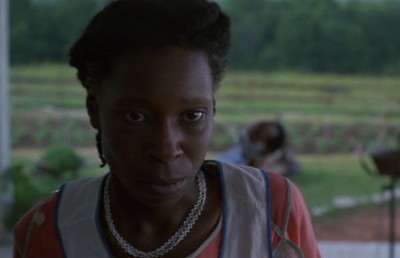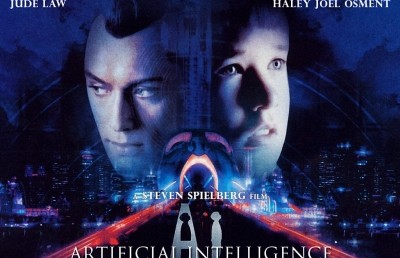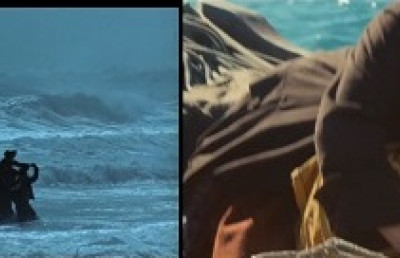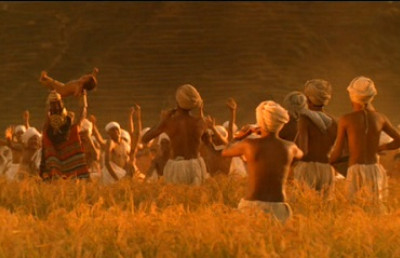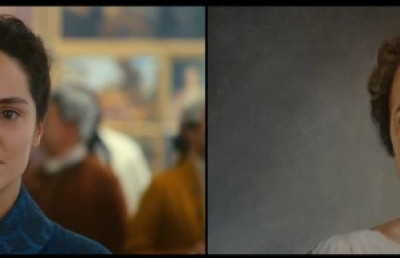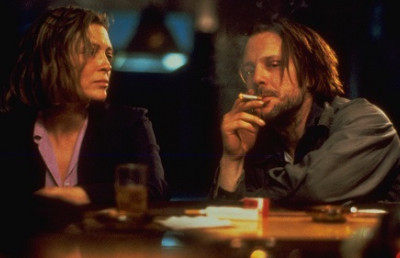Horror in History: The film Schindler’s List by Steven Spielberg
Difficult Facts Survive Sentimental Sensibility
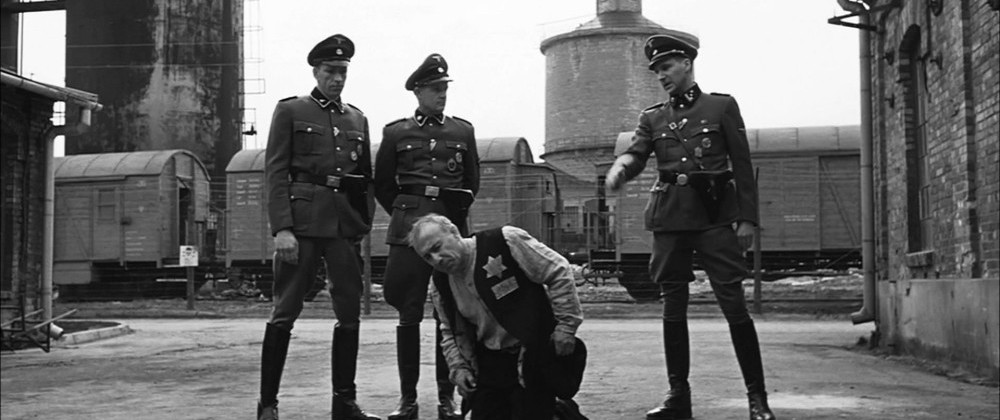
Schindler’s List, directed by Steven Spielberg
Screenplay by Steve Zaillian,
based on Schindler’s Ark, a book by Thomas Keneally
Production Designer: Allan Starski
Cinematographer: Janusz Kaminski
Editor: Michael Kahn
Starring: Liam Neeson, Ben Kingsley, Ralph Fiennes
Universal, 1993
Some artists have an instinct for truth; and some have an instinct for the pretty lie. Knowing his work, I had not expected the grasp of drama and history that film director Steven Spielberg maintains in his film Schindler’s List, a beautiful and long black-and-white-film that begins with a Jewish family observance around a dinner table—the family suddenly disappears. The films is, of course, about the disappearance of millions of Jews as a result of Nazi policy and violence in Germany and Eastern Europe during the second world war of the twentieth century; and the unlikely survival of a small number of Jews who worked in the Polish factory of Oskar Schindler. It is based on a book by Thomas Keneally. The sight of the smoke from a low-burning candlewick on the disappeared Jewish family’s table is replaced by an image of the steam erupting from a train in 1939 Poland, in a Krakow station (principal photography for the film took place in Krakow, by an international crew, with many Poles among them). The German army has defeated the Polish army; and Jews in Poland—men in their beards and side curls, women in their hats and coats—are rounded up, named, listed. Meanwhile, Oskar Schindler drinks alone in a nightclub, and maneuvers to meet German officers, whom he treats well, connections he will cultivate. Schindler, acted by the talented and tall, big-bodied actor Liam Neeson, a giant in more than one way though thinner in more recent films, solicits Jewish investors and buys a Polish factory, which Jews will work in too. Itzhak Stern, Schindler’s Jewish accountant, acted by Ben Kingsley, asks what Schindler will do if other men put up the money and Stern organizes the factory, and Schindler admits he will be the face of the company, responsible for presentation. For their investment, the Jewish men will get factory products, utensils, they can use or trade (some bartering occurs in a church); and Schindler’s factory workers, men and women, will get a longer life.
The sight of forced Jewish movement, of Jewish names being listed on rolls and Jews moving from one place to another with wagons of their belongings, recalls other such film images (I thought of The Ten Commandments, a movie Spielberg liked as a boy, and also of Ben-Hur and Fiddler on the Roof). It is an echo of an exodus that has become myth. A bourgeois Jewish family is forced to give up its nice apartment, which Oskar Schindler will get while they are moved to an open room without privacy: “It could not be better,” says Schindler, while the displaced woman says, “It could be worse” (the man with her asks how it could be worse). This is efficient editing; and it demonstrates how one person’s rise is balanced by someone else’s fall.
“They’re not as bad as everyone says,” one Jewish man says of the Nazi officers, trying to be optimistic, before admitting, “They’re worse.” He is working to organize the Jews; and the film shows how the government managed and exploited Jews—through a Jewish council, as well as with the threat of violence. The Nazis—the officers and members of the National Socialist German Workers Party, which had less than fifty members when Adolph Hitler joined it (Hitler, who reigned from 1933 to 1945, had been the party’s seventh member), but which millions later joined, some in order to get work—advocated state power and militarism, and an anti-modern romanticism that saw Nordic peoples as ideals. A clue to the party’s irrationalism may be that it was a workers’ party that disapproved of trade unions (and the party newspaper’s name could be translated as Racial Observer). In Schindler’s List, we learn that Jews are paid less than Polish workers, but Polish workers get money for their work while the pay of Jewish workers is given to the government. The factory instructions the workers get create a picture that is nearly documentary; and its simple persuasive power is engaging and flows into other scenes (the same thing happens later when we see the medical inspections of naked incarcerated Jews, the scrawny bodies and dangling penises of old men like talismans of authenticity). Schindler’s Jewish accountant Itzhak Stern, who does not drink (he looks askance at the liquor offered in moments of fellowship or celebration), is the organizing brain in the business; and he and Schindler both know that Schindler’s success would be impossible without war.
The war takes place and property from the Jews, but not all pride or purpose (some speak of being artists and intellectuals, shocked to find it does not matter, and they try to hold on to religious relics and family jewels). Much of the story was filmed using hand-held cameras, but Schindler’s List has a formal beauty: if it is possible for a film to be both austere and rich, this is it. The editing of the film, by Michael Kahn, is one of its strongest traits: for example, a one-armed elderly Jewish man expresses his gratitude for being hired by Schindler, leaves work for the day with others, and the next morning when military men command the workers to shovel snow from the streets before going to their factory jobs, the old man is separated from the group, mocked, and a gun is put to his head: the cruelty and instability of life during this wartime is clear. In another instance, a voice begins speaking in one scene and continues through another, though the characters and locale changes; and we are given both general and specific information. Connections are made; and meaning is created—even when the acts in the film deny the significance of Jews and the applicability of universal standards of morality and value.
One man speaks lightly of how his experience in the Jewish ghetto connects him with ancestral squalor; and there is even the spoken thought that in the ghetto is liberty. These are reminders of how people try to get comfortable or find something redemptive even amid misery, in order to save their sanity or spirit—but to lack power is not ever comfortable or safe. The introduction in the film of Amon Goeth, a supervising officer capable of a cold and incoherent viciousness, makes that undeniable. Amon Goeth is acted by Ralph Fiennes; and here the slender Fiennes is a little overweight, a little out of shape, enough to give the handsome man a porcine quality. Goeth hears a Jewish woman engineer criticize the faulty foundation of a structure being built—a prisoner, she is a woman whose pride in her profession keeps her standards high, despite being put to work by the Germans—and Goeth orders her shot, and then after she is killed, he insists that her corrective instructions be carried out. That is madness. It is evil. No words are corrosive enough. It is now 1943 and Goeth speaks of how Jews came with nothing and prospered in Krakow for six centuries, and he announces that this history will be erased, will become no more than a rumor: and then, day and night, Jews are evicted, transported, and killed. The killing is impersonal, impulsive and irrational; and a scene with a German officer stopping amid the massacre to play a piano—with some of his comrades guessing which great classical composer’s work he plays—should feel like too much, but it does not. One of the most civilized countries in the history of the world behaved with the greatest savagery. It still mystifies.
To aspire to civilization to such an extent that the impulsive or instinctive sides of one’s personality or culture are not recognized can lead to delusions. To refuse to recognize one’s own inclination to error or weakness can produce further error and brutality. It is possible to do things one has no name for; and to see evil only in others. Is that what happened to the Germans—or was the German shame at defeat at the end of the first world war such that its ambition to restore its prominence, and exact retribution on the world, corrupting? (Before the twentieth-century’s first world war which ended in 1918, there was a lot of nationalism in Europe and the building of national armies, partly to protect colonial business interests in other parts of the world. It is rare to build an expensive and large army and not be tempted to use it; and there might have been war in Europe involving Germany and other countries even if the Austrian archduke Francis Ferdinand had not been assassinated in 1914 and the Serbians charged, with other countries taking sides.)
In the film Schindler’s List, Oskar Schindler realizes that his factory has done well (and good) for the Jews and for his wallet, but he fears that the humanitarian benefit will be identified in public. It would cause him trouble. Yet Schindler, whose business comes under Amon Goeth’s supervision, tries to give Goeth another way of seeing, telling him that power is having the ability to punish or kill but choosing not to do so. Goeth, who is impressed by Schindler, tries to take on the lesson but it goes too much against his nature. One of the scariest scenes shows Goeth attracted to one of his maids, Helen, a young Jewish woman (a sensitive Embeth Davidtz, who would be very good in Junebug, a subsequent film), a scene in which Goeth debates whether to act on his attraction—with the woman standing there, terrified, he acts out both sides of the conversation, his and hers. He asks, Could I become intimate with someone who may not be human? (In this scene is the fear of difference, of the other, what is buried—the fear and hate and lust—beneath manners and reason in civilization.) The scene is masterful in terms of conception, writing, staging, and acting (the screenplay is by Steve Zaillian, based on Thomas Keneally’s acclaimed novel Schindler’s Ark). Amon Goeth beats the woman, his maid Helen, for his desire. Schindler himself gets in trouble for kissing Jewish women and girls at his birthday party (I thought the last kiss went on too long; today, one might think it a form of harassment. Questionable staging). Goeth actually comes to Schindler’s defense.
Rumors of the mass extermination of the Jews increase, and some Jews are dismayed, disbelieving. What kind of sense would it make to kill your workforce? The rumors are true; and there are graveyards to prove it. As the war begins to turn against the Germans, Goeth is told to dig up bodies, ten thousand bodies, and to burn them, eliminating evidence, before sending his remaining Jews, then living in a Plaszow labor camp, to Auschwitz. (As the bodies are dug up and sent to burn, Schindler recognizes the red coat of a little girl whom he had seen run into a building to hide years before. The rare show of color—the red coat—identifies her, helping to give personality to a mass—though the film is peopled with enough interesting actors that the viewer may remember them without knowing them well.) Schindler offers to buy the factory Jews from Goeth. (Schindler dictates the names of the Jewish workers to Itzhak Stern, whom one imagines would know their names better than Schindler. The dictation grants Schindler agency, command—but is it accurate?) Schindler pays for his workers—they are slaves and he buys them—and for the maid that Goeth harassed; and they are relocated to Schindler’s hometown in Czechoslovakia, where Schindler starts a new factory, and he and his workers spend the remaining days of the war. They do not produce the expected arms, which would help Germany in the war; and the point is made that Schindler sabotages—recalibrates the specifications—of his own machines, an emphatic touch. Schindler’s insistence that Jews practice their religion is an oddity (how many factory managers of any kind want their workers to take time off to pray?). Those things suggest Oskar Schindler’s acceptance of a large purpose.
When the war ends, Schindler is given a ring and an exonerating letter by his workers and then he makes a speech full of guilt about not having done more—about not having saved more lives. It is grotesque. Even Liam Neeson cannot survive the scene with dignity. (I am reminded of The Haunting, a very bad horror film I saw with Neeson and Lili Taylor, and Catherine Zeta-Jones and Owen Wilson: one might think Neeson and Taylor would be the more impressive among the cast, but they acted in the film—one of the most ridiculous I have ever seen—with great sincerity and consequently appeared stupid, while Zeta-Jones and Wilson gave just enough of themselves without losing their lightness—their charm, sensuality, and wit—and emerged as much more intelligent actors.) The self-abasement of Oskar Schindler near the end of Schindler’s List may satisfy those—possibly too idealistic, possibly hateful and irrational—who do not want the saving of one thousand (or 1,100) to be celebrated when an estimated six-million have died, but it is, at once, inhuman and falsely sentimental. It is a rare false move, though not the only one, in a film worthy of the consideration and respect it has received. The film closes with its actors and the real Schindler survivors visiting the grave of Oskar Schindler, whose best work was what he did for the Jews during the second world war.
The importance of memory was intoned soon after the film Schindler’s List was made; the idea being that as those who were alive during the war began to die, that memory of the hate and horror, of what was survived, would die with them. Could the memory die, and die so quickly? Adolph Hitler and the promise he gave to the world and the threat he posed for it formed one of the most devastating and significant catastrophes in western civilization: a betrayal of civilization through the means of civilization—with high ideals, with law and order and reason: he turned the entire machinery of the state toward a purification requiring death and destruction. There had been other films on the subject before Schindler’s List (Judgment at Nuremberg, for one; and on television in the late 1970s was the mini-series “Holocaust”). Since Schindler’s List, there have been many war films that place the Jewish experience at its center; and more recent films have taken different approaches to the war. The Counterfeiters, directed by Stefan Ruzowitzky, shows Jews in a concentration camp, but in that film the prisoners—including a criminal counterfeiter, a political radical and printer, a banker, and an art student—are made to help the Nazis duplicate English and American money (first to sabotage the foreign economies, then to finance the war); and the film is as much a black comedy and a thriller as it is anything—and it is stronger for those differing tones. I recall that a friend—a Jewish male friend—was skeptical a few years ago when Defiance and The Reader were announced. I told him that I thought for the memory of that time to remain vivid different approaches would have to be taken, and not all of them focused on Jewish suffering. (Of course, Jews were not the only ones the Nazis imprisoned or killed.) What is important about Edward Zwick’s Defiance is signified by its name: the Jews have guns, know how to use them, and fight back—and they (Daniel Craig, Liev Schreiber) laugh and have sex and question being a chosen people while creating a culture that helps them to survive in a forest, outside of civilization. My friend saw the film and recommended it to his college students. I respected The Reader, directed by Stephen Daldry, but did not like it as much; it focused on a boy who has an affair with a train worker he later learns was a concentration guard who may have been partly responsible for the accidental but preventable death of Jews in a fire. (Ralph Fiennes plays the boy when he is grown, and Kate Winslet the woman.) Yet, what was interesting to me about The Reader was that it was about several betrayals: the guard failed to do what she could for the Jews; and the boy she knew, a boy who loved her, failed to do what he could to save her, when he had evidence that could prevent her court conviction—the message of the film might be that if we fail to have moral courage in response to others, they may fail us too.
What Schindler’s List does is to recreate something of the original shock. It hurts; then attempts to heal.
Essay submitted February 11, 2011




